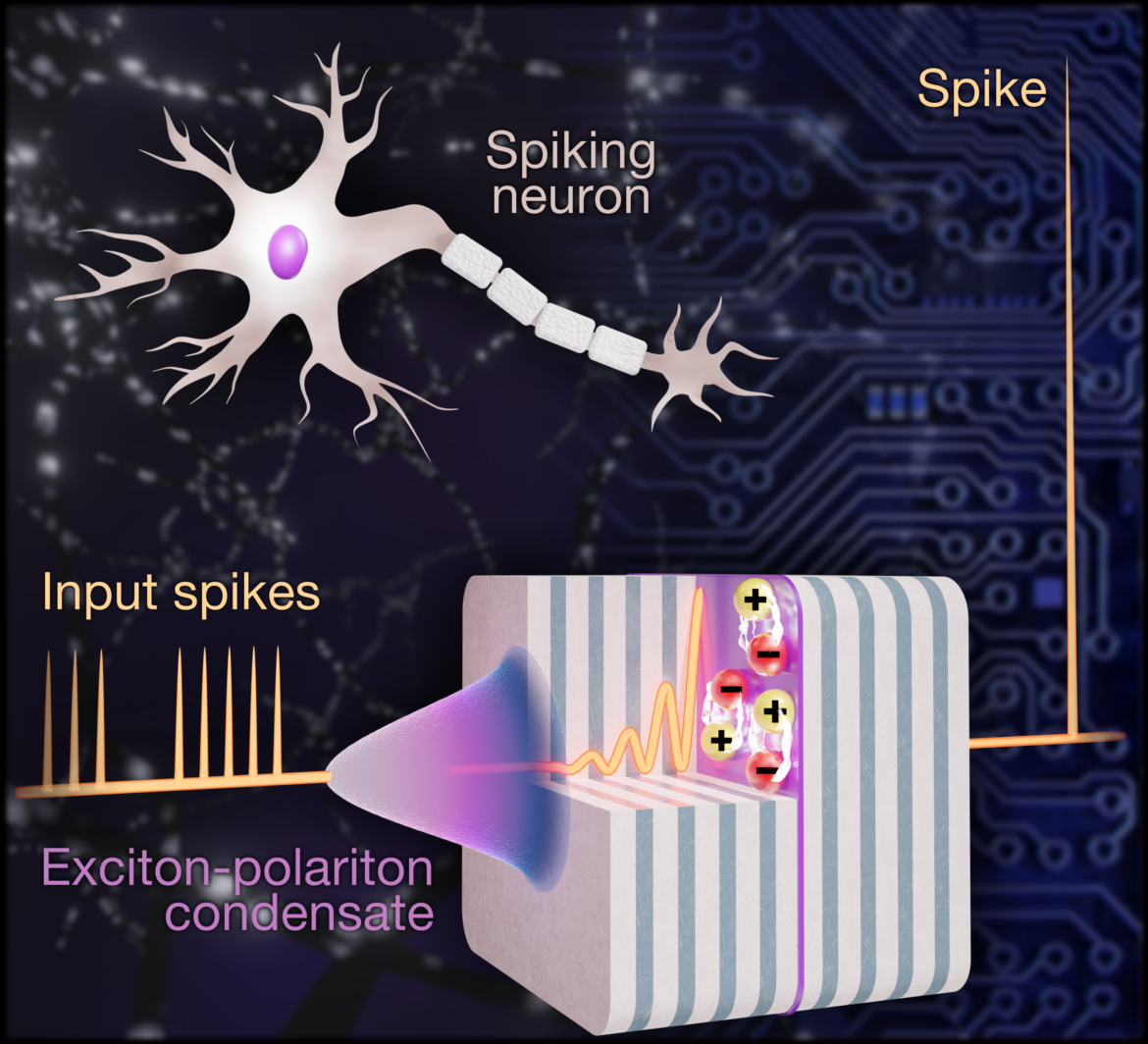Scientists from the Faculty of Physics at the University of Warsaw (UW) and the Polish Academy of Sciences (PAN) have used photons to create a pulsating neuron, the basic element of a future photonic neural network processor. The results of the Polish scientists’ work are available in the latest Laser and Photonics Review.
“The human brain is made up of 100 billion neurons, each forming an average of several thousand connections to other nerve cells. This creates a network of around 100 trillion connections, enabling our brain to perform trillions of operations per second, using only 20 – 25 watts of power”, say the researchers, adding that, by comparison, conventional processors use ten times as much power to recognise just a thousand different types of objects.
Researchers from the Faculty of Physics of the UW and the Polish Academy of Sciences have proposed using photons in a way that allows the creation of pulsed neural networks. Dr Krzysztof Tyszka of the Faculty of Physics at the UW stresses that photonic systems provide communication at the speed of light, low loss and low energy consumption. The advantage of photons is that their propagation takes place with virtually no energy loss. Unfortunately, since they interact with each other in a relatively weak way, it is difficult to use them to perform computational operations in a manner analogous to electronic systems, the scientist adds.
Therefore, the researchers decided to turn to a solution in which photons interact strongly with particles of very low mass, called excitons.
The strong interaction is achieved by placing the photons and excitons together in an optical microcavity. This procedure forces a cyclic exchange of energy between these two particles. “This type of synergy is so persistent that physicists refer to it as a quasiparticle called a polariton for short”, explains Prof Barbara Piętka of the Polariton Laboratory at the UW Department of Physics.
The researchers noted that when polaritons are excited with laser pulses, they emit pulses of light that resemble the pulsing of biological neurons.
Adrian Andrzejewski





